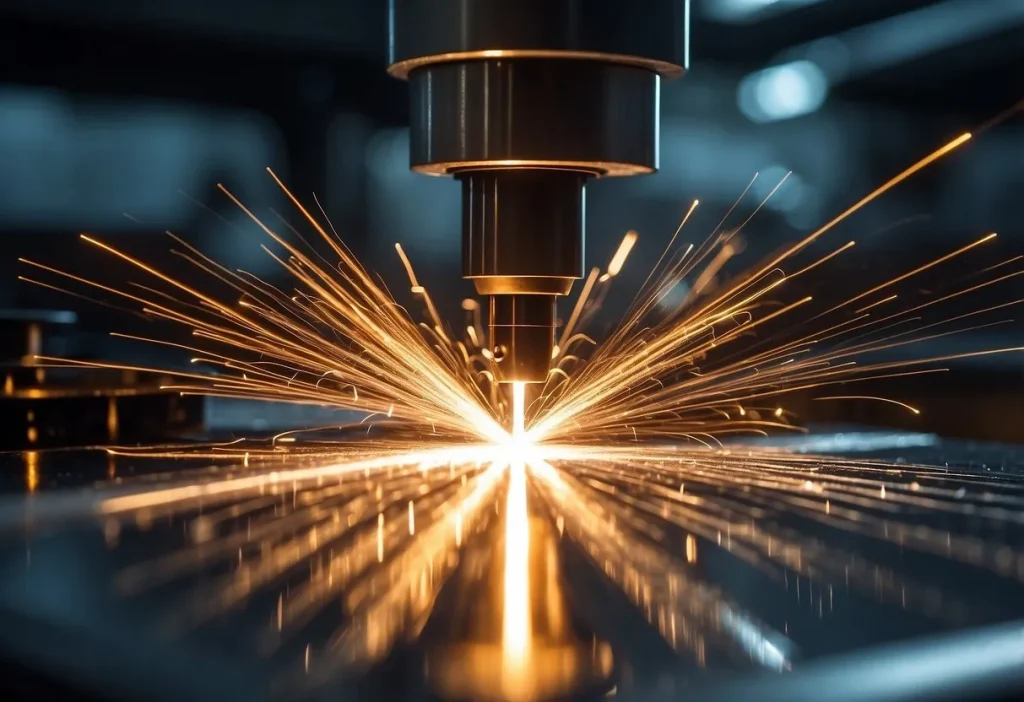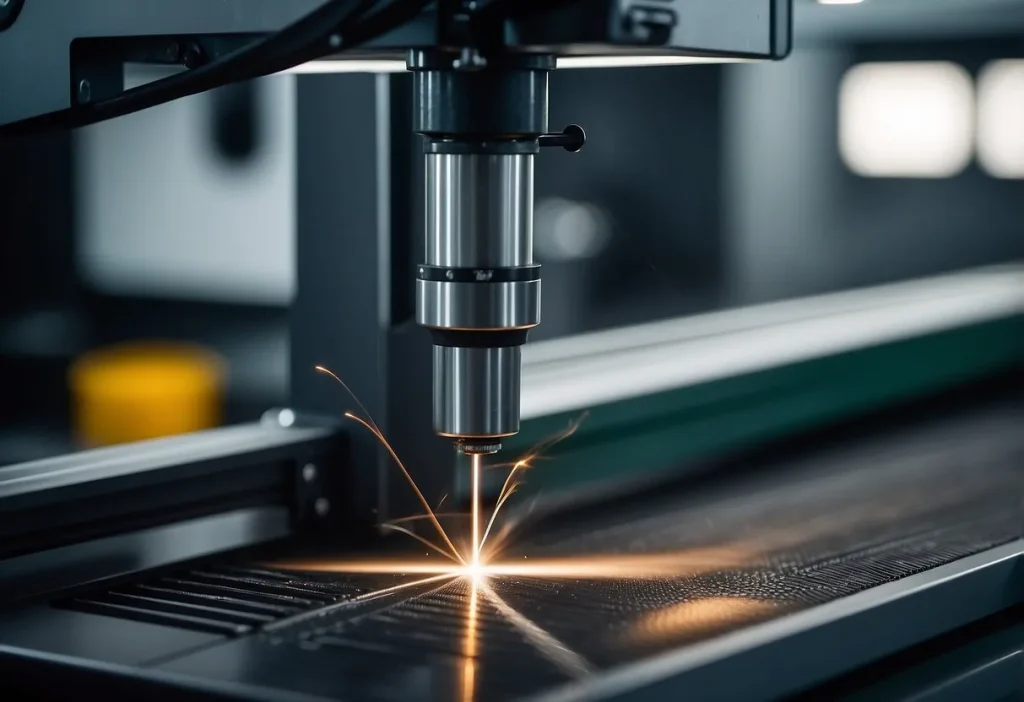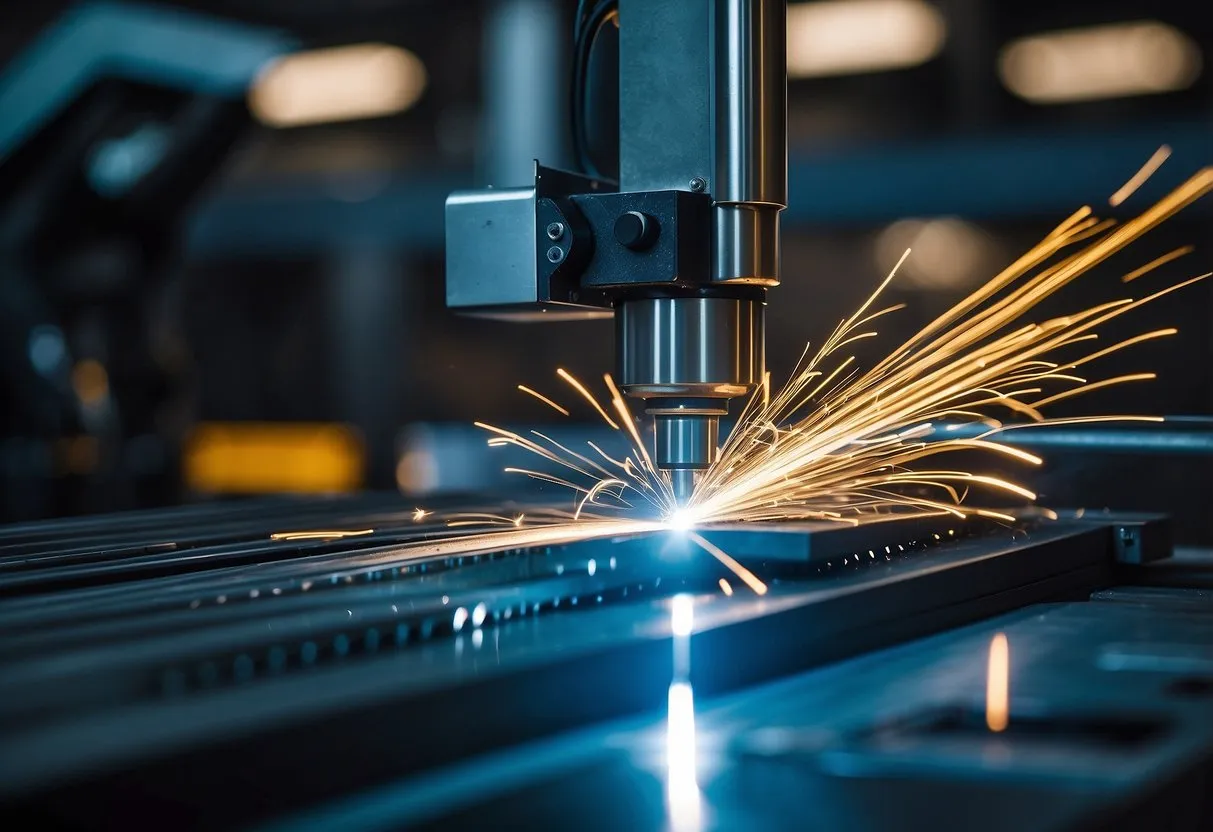Tanaka laser cutting machines are known for their precision and high-quality results. These machines use laser cutting technology, which involves focusing a laser beam onto a material to cut or engrave it.
We rely on fiber lasers for their efficiency and precision. Fiber lasers offer higher laser power, which allows clean cuts on various materials.
Our laser cutters are equipped with advanced laser settings. These settings can be adjusted for different materials and thicknesses, increasing versatility.
The cutting performance of Tanaka laser cutting machines is remarkable. They produce smooth and precise edges, crucial for enhancing product quality.
Using a Tanaka laser cutter, we can achieve detailed and accurate cuts consistently. Whether for industrial or creative projects, these machines meet high standards.
The reliability and precision make Tanaka laser cutting machines a preferred choice in many industries. By focusing on precision and laser power, we ensure every cut is clean and exact.
In summary, Tanaka laser cutting machines stand out for their efficiency, versatility, and precision. They help us produce superior quality products with neat and smooth edges.
Fundamentals of Laser Cutting Process

Understanding the key factors of the laser cutting process helps in achieving clean and precise edges in our Tanaka Laser Cutting Machine. These factors include optimizing cutting parameters, the role of assist gas, and minimizing heat-affected zones.
Optimizing Cutting Parameters and Speed
To achieve high-quality cuts, we need to fine-tune the cutting parameters. This includes setting the correct cutting speed and laser power. If the speed is too fast, the laser might not cut through the material, leading to incomplete cuts. If it’s too slow, excessive heat can damage the material.
Example:
- For metals, laser power should be set high, with a moderate cutting speed.
- For plastics, lower power levels are effective with slower cutting speeds.
Proper adjustment ensures precision and enhances the dimensional accuracy and surface finish.
The Role of Assist Gas in Laser Cutting
Assist gas is vital in laser cutting. It helps remove melted material from the cutting kerf and cools the cutting area. Common gases include oxygen, nitrogen, and air. Each gas has a distinct role:
- Oxygen: Reacts with the material, increasing heat and cutting speed.
- Nitrogen: Prevents oxidation and produces clean edges.
- Air: Cost-effective option for less critical cuts.
The gas flow and nozzle positioning are crucial to maintain the quality and precision of the cuts.
Minimizing Heat Affected Zone (Haz)
The Heat Affected Zone (HAZ) is an area where the material properties change due to high temperatures. Minimizing HAZ is essential to maintain the material’s integrity and prevent distortions.
To achieve this, we should:
- Optimize laser power and cutting speed.
- Use appropriate assist gas.
- Ensure proper focusing of the laser beam.
This careful control helps avoid surface haze, ensuring a uniform surface finish without compromising the mechanical strength of the material.
Enhancing Edge Quality and Precision

We focus on achieving clean edges and precision, which are vital for producing high-quality products, reducing waste, and minimizing downtime.
Achieving Clean and Precise Edges
Our cutting machine ensures precision with advanced laser technology. We can create exact designs with smooth, clean edges that meet high standards.
Precision results from stable power outputs and fine adjustments.
Accurate calibration of the laser reduces errors during cuts and ensures each edge is flawless.
A well-maintained machine delivers consistent cutting quality on various materials, enhancing the surface finish and edge quality.
Reducing Waste and Downtime
Reducing waste is crucial in maintaining efficiency and profitability. By using precise cutting, we minimize scrap and conserve material.
Less material waste reduces production costs.
Minimized downtime is achieved through reliable machine operation and scheduled maintenance.
Regular checks and servicing prevent unexpected breakdowns, keeping the laser cutter running smoothly.
Optimal performance means less idle time and more productive hours.
Proper training for operators ensures they can quickly address minor issues and keep production on track.
Material Considerations in Laser Cutting
Using the right materials is key to achieving precision and quality in laser cutting. Different materials respond differently to laser cutting, and their thickness can also impact the results.
Appropriate Material Selection
Selecting the appropriate material is crucial for the quality of the cut. We have found that wood, plastics, acrylic, stainless steel, and rubber offer varied results.
Wood often cuts cleanly but can char if the laser power is too high. Plastics like acrylic usually yield smooth edges but can melt if not managed properly. For stainless steel plates, a higher power laser is necessary to ensure a clean cut without jagged edges.
Handling Different Materials and Thicknesses
When dealing with various materials, we adjust the laser settings to match the thickness and type of the material. Thicker materials like robust metals and stainless steel require more power and slower cutting speeds to ensure precision and avoid overheating.
Conversely, thinner materials, such as rubber and some plastics, demand less power to prevent warping and burning. Always consider the material’s attributes before setting the laser parameters.
By understanding and adjusting for material differences, we ensure top-notch product quality with precise and clean edges.
Customization and Design Capabilities
We offer state-of-the-art solutions for creating detailed and precise designs. Our machines are capable of handling everything from simple to highly intricate shapes and logos, catering to various manufacturing needs.
Cutting Complex Shapes and Designs
Our Tanaka Laser Cutting Machine excels in cutting complex shapes. With advanced technology, we can achieve high precision, ensuring clean and accurate edges every time.
Whether it’s curved lines, tight angles, or intricate patterns, our machine handles them efficiently. This capability is valuable for industries requiring detailed and specific parts. For example, automotive and aerospace sectors benefit from our cutting service due to the precision and consistency we provide.
Key Features:
- High precision: Achieves detailed cuts with minimal errors.
- Versatility: Handles various materials such as metal, plastic, and wood.
- Efficiency: Fast processing speeds without compromising quality.
Creating Logos and Intricate Details
Producing high-quality logos and fine details is another strength of our laser cutting machine. We can engrave and cut intricate designs with exceptional accuracy, making it perfect for branding and decorative purposes.
Using our machine, we can create logos that stand out, even on challenging surfaces. This is crucial for products that require visual appeal and brand recognition. Our ability to carve out detailed designs ensures that every logo and detail meets client specifications.
Advantages:
- Detailed engraving: Perfect for fine lines and small details.
- Durability: Ensures that logos and designs maintain their form over time.
- Customization: Tailored solutions to meet specific client needs.
Our expertise in cutting complex shapes and creating detailed logos sets us apart in the manufacturing world, providing high-quality and precise designs for all our clients.




